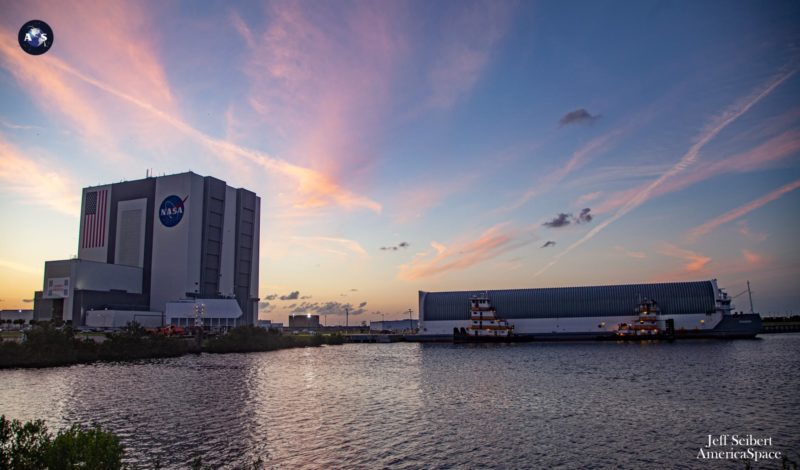
After more than a year of testing and last month’s successful full-flight-duration firing of its four RS-25 engines, the gigantic Core Stage for the first Space Launch System (SLS) rocket safely reached Florida on Tuesday. It traveled from NASA’s Stennis Space Center in Bay St. Louis, Miss., to the Space Coast, aboard the 310-foot-long (94.4-meter) Pegasus barge and its long-awaited arrival was captured in stunning imagery by AmericaSpace’s photography team.
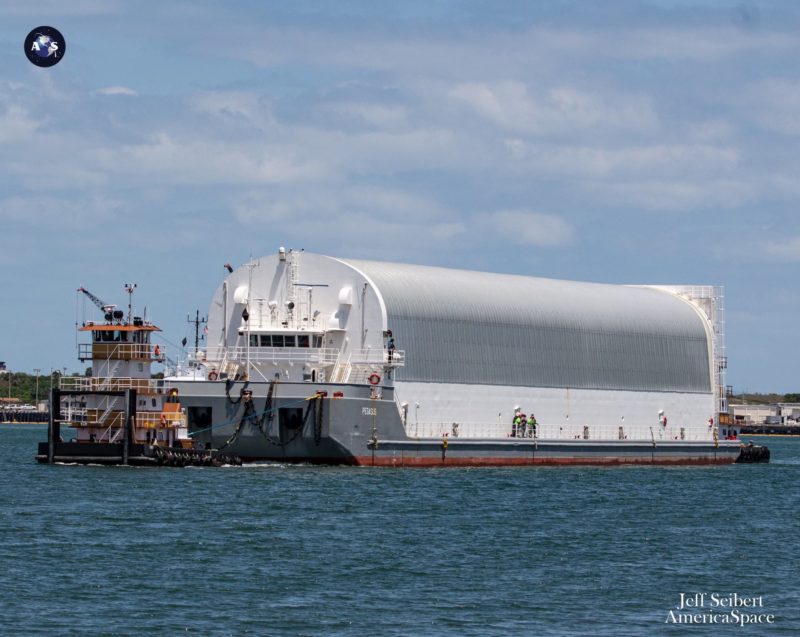
The Core Stage will now enter pre-flight processing in the cavernous Vehicle Assembly Building (VAB) for the uncrewed Artemis-1 mission to the Moon, which remains tentatively scheduled for launch later this fall.
With the arrival of the Core Stage, the final major structural piece is in place for Artemis-1, which will become the first voyage to lunar distance by a crew-carrying vehicle since Apollo 17, way back in December 1972. The Boeing-built stage joins a pair of five-segment Solid Rocket Boosters (SRBs), developed by Northrop Grumman Corp., which were delivered by rail to the Cape last June.
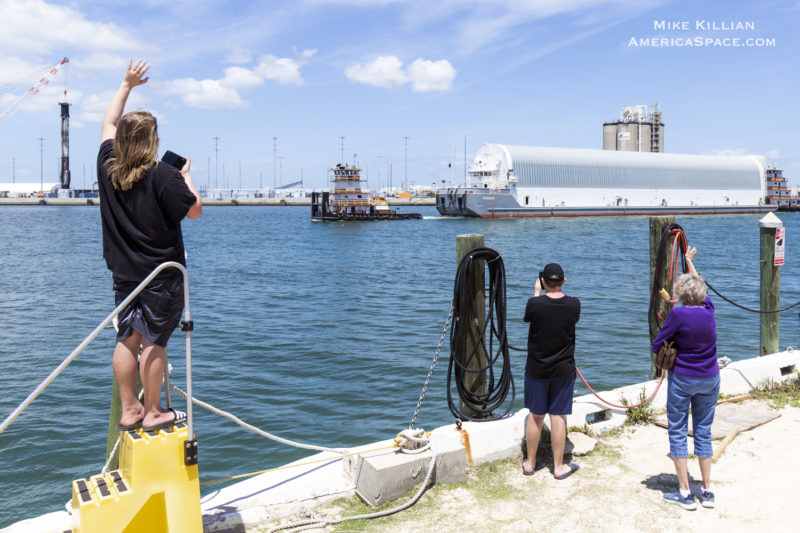
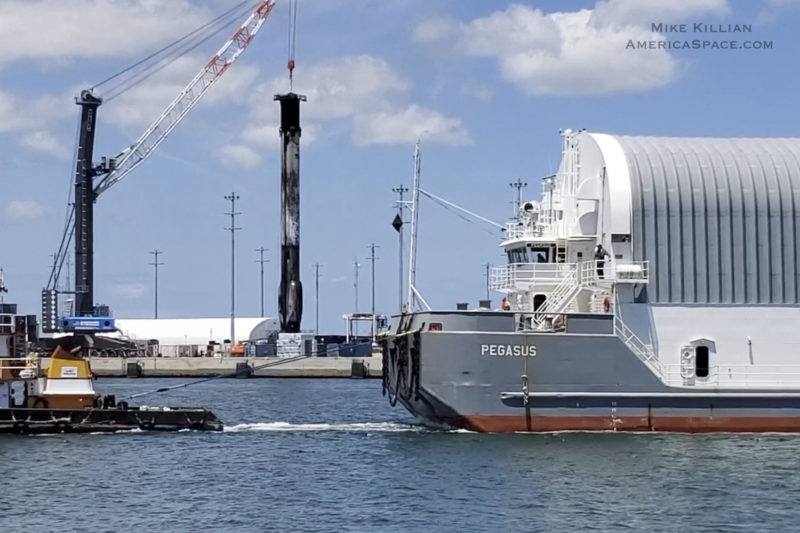
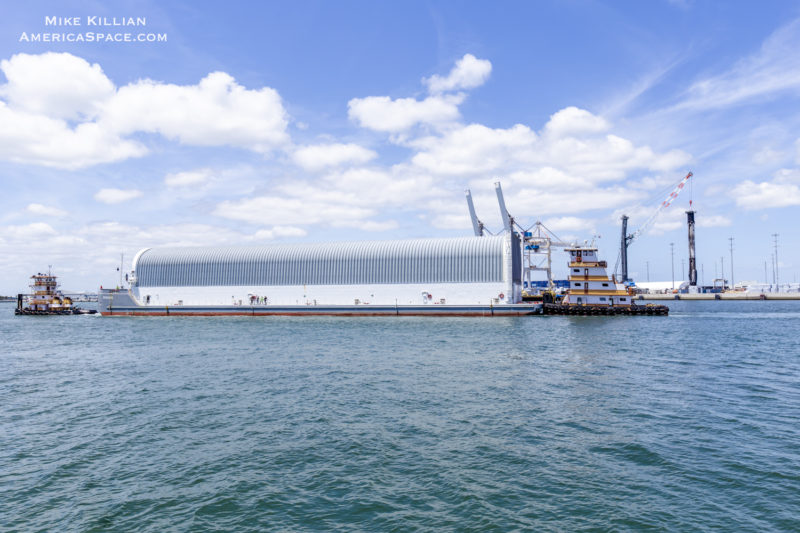
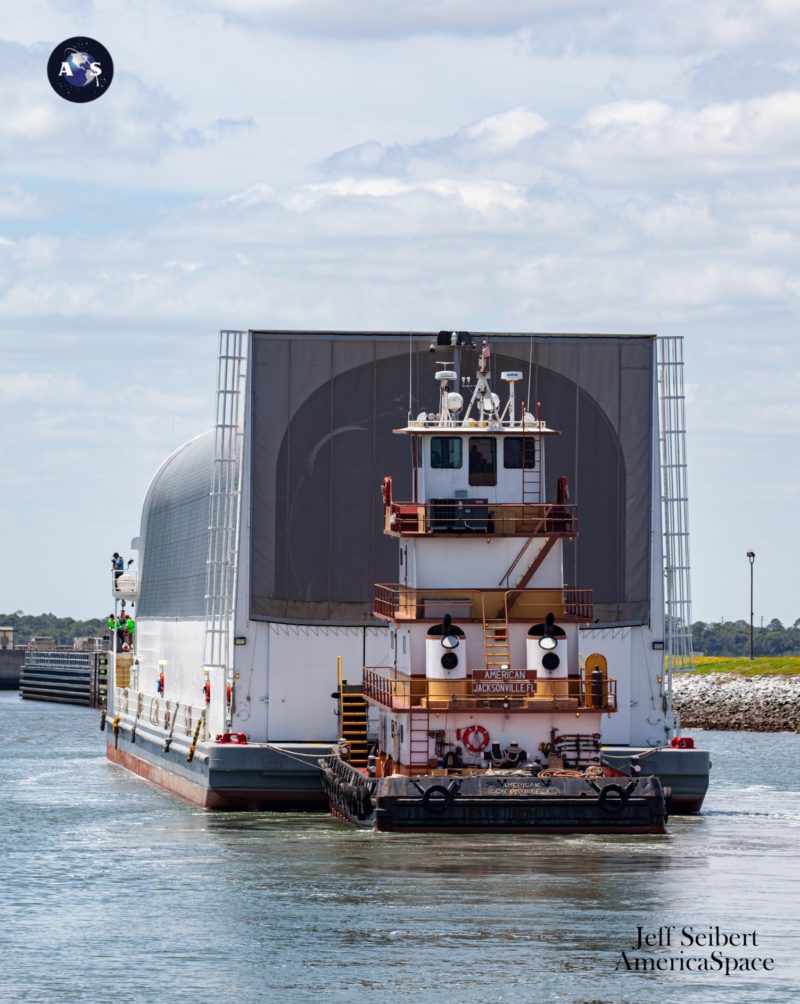
Additionally, the Launch Vehicle Stage Adapter (LVSA) arrived on the Space Coast last July, to join the Interim Cryogenic Propulsion Stage (iCPS) and the Orion spacecraft itself. The latter will execute a roughly three-week trek out to the Moon and spend six days in the Near-Rectilinear Halo Orbit (NRHO) which is expected to be used on successive crewed missions.
The 212-foot-tall (64.6-meter) Core Stage was delivered from NASA’s Michoud Assembly Facility (MAF) in New Orleans, La., to Stennis aboard the Pegasus barge back in January 2020, where it was ensconced in the historic B-2 Test Stand. Over the course of the next nine months, it was put through a punishing regime of five “functional” Green Run tests.
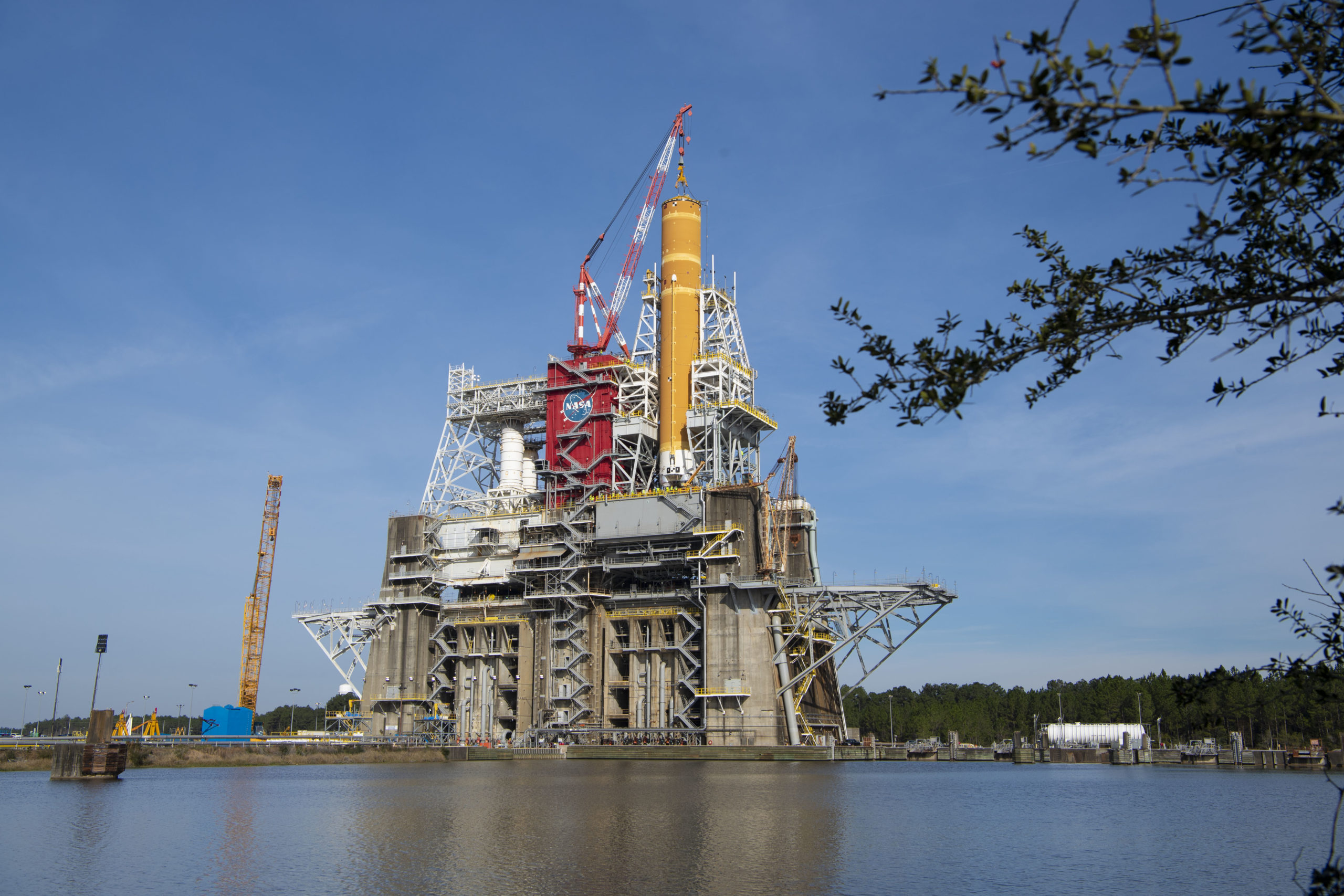
These validated models to operate its Guidance, Navigation and Control (GNC) systems, checked out its avionics, tested its safety systems, evaluated its Main Propulsion System (MPS) command and control functionalities and operated its Thrust Vector Control (TVC) and hydraulics.
Notwithstanding the devastation wreaked worldwide by the COVID-19 pandemic, those five functional tests were accomplished with remarkable pace and agility on the part of a tight-knit NASA/Boeing team. That pace was all the more impressive as the campaign also faced the ravages of multiple natural predators in the form of Hurricanes Marco, Laura and Sally last summer and Hurricane Zeta last fall.
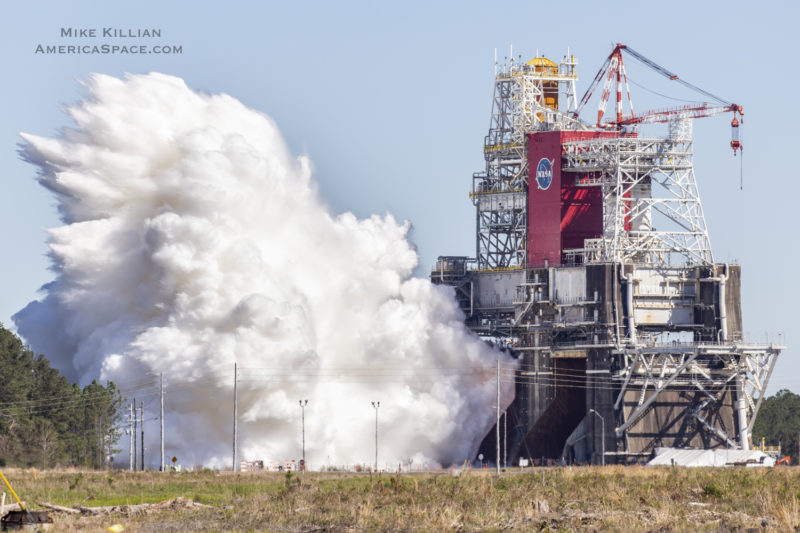
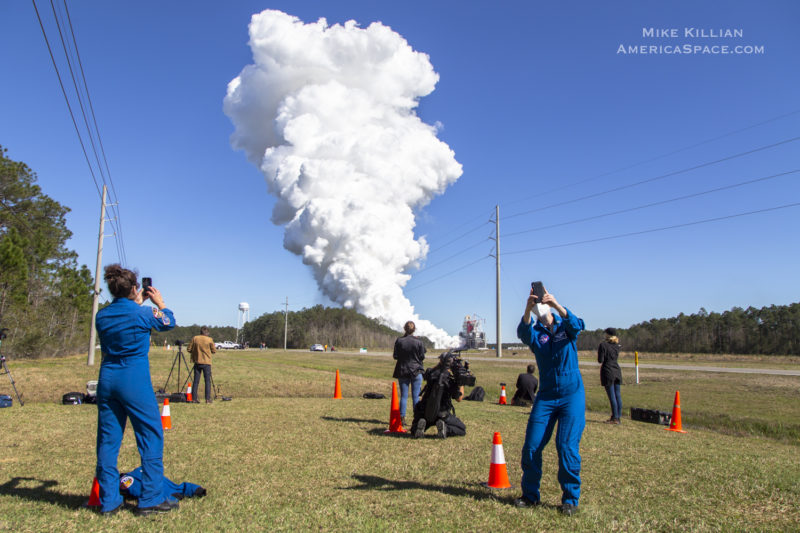
Three “operational” Green Run tests got underway in October, which were designed to simulate a full SLS countdown, load more than 733,000 gallons (3.3 million liters) of cryogenic oxygen and hydrogen propellants into the Core Stage—known as the Wet Dress Rehearsal (WDR)—and fire the four RS-25 engines for a full mission duration of eight minutes.
An initial Hot Fire Test on 16 January was cut short when highly conservative test parameters prompted the computers to shut the engines down earlier than intended after just 67.2 seconds. However, a second Hot Fire Test lasting eight minutes and 19.6 seconds took place with flying colors on 18 March and was declared “flawless” by NASA.
Following the Hot Fire Test, the Core Stage underwent customary inspections, refurbishment and data reviews, a process which included drying the engines and repairing Thermal Protection System (TPS) materials. It was disconnected from the B-2 Test Stand on 19-20 April and lowered to a horizontal position, ahead of loading aboard Pegasus for its water-borne transit to Florida.
Upon arrival, it will be transitioned to the VAB for stacking onto its boosters, after which the remaining hardware for Artemis-1 will be integrated. Earlier this month, fueling of Orion’s European Service Module (ESM) got underway.
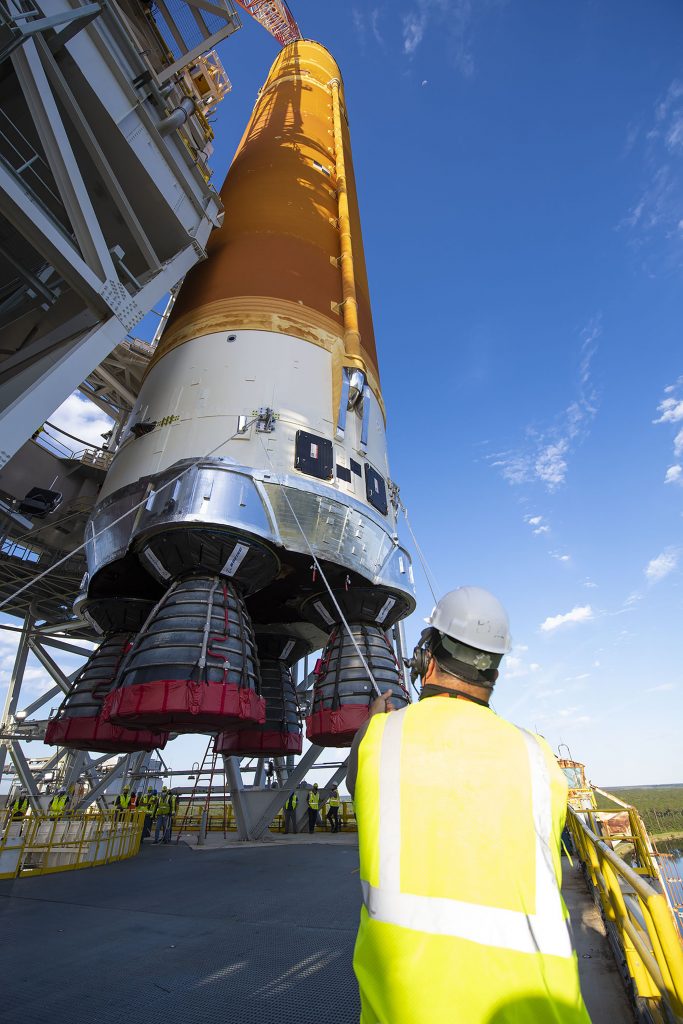
Elsewhere, stacking of the five-segment SRBs on the Mobile Launcher (ML) was completed early last month. Following the delivery of the ten segments last June, their massive aft “skirts” were moved from the test cell in KSC’s Booster Fabrication Facility (BFF) to the Rotation, Processing and Surge Facility (RPSF) for temporary storage.
Actual stacking preparations got underway in relatively short order, with the “pinning” of the aft skirts onto the boosters’ aft segments. Last November, the aft-segment hardware was transferred from the RPSF to High Bay 3 of the cavernous VAB and on 2 March the boosters’ nose assemblies were set in place. Since then, electrical instrumentation and pyrotechnics have been installed and systems tested.
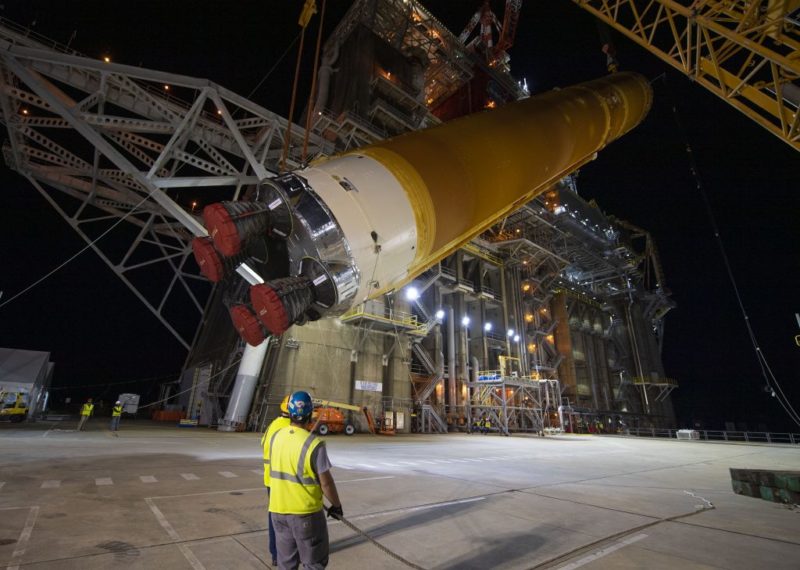
Final integration of the SLS hardware—the Core Stage/booster stack, the iCPS, the LVSA and Orion and its Launch Abort System (LAS)—will occur over the next few months, with NASA describing as “challenging”, yet still holding firm to its No Earlier Than (NET) target of November for launch from KSC’s landmark Pad 39B.
Interestingly, this site’s first launch in May 1969 was Apollo 10, a full dress rehearsal in lunar orbit for the historic Apollo 11 landing on the surface of the Moon. Pad 39B later saw four Saturn IB flights between May 1973 and July 1975, during the Skylab and Apollo-Soyuz Test Project (ASTP) era, then 53 shuttle launches between January 1986 and December 2006. Its most recent launch was the Ares I-X test flight under NASA’s ultimately-canceled Constellation Program in October 2009. As such, when Artemis-1 takes flight from Pad 39B, it will be the 60th launch from this historic complex.
.
.
FOLLOW AmericaSpace on Facebook and Twitter!
.
.
Missions » SLS » Artemis »



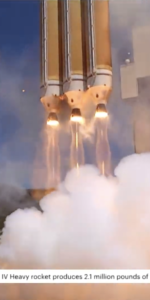

Right on…I love the USA…my country! Elon Musk and Jeff Bezos did not build the infrastructure they use, American Citizens inspired by FDR/IKE/JFK did. Elon Musk and Jeff Bezos would be 2nd rate feudal lords in some 2nd rate fiefdom were it not for the USA. God-Bless-America !
S Brennan did not build the infrastructure he uses either. The USA would be driving to Walmart and Taco Bell in covered wagons if we had to wait for 2nd rate maroons like S.